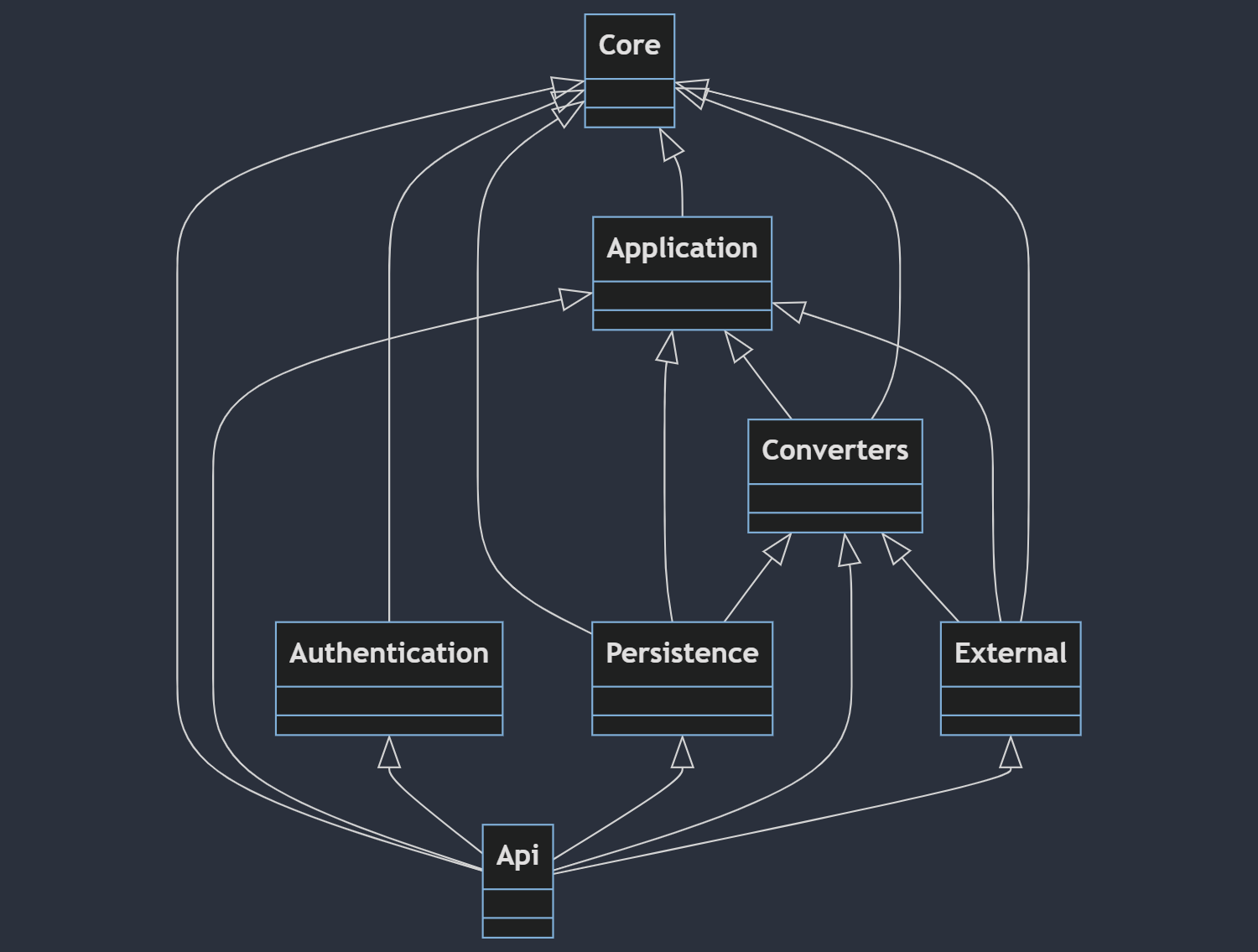Current state of the code base
Backend
The primary job for the Tyle backend is to serve as a CRUD-application for creating IMF types, as well as forwarding approved types to an external type library. Tyle currently uses Common Library as its type library.

The diagram above shows the dependencies between the different projects in the backend. We will go through these projects, outlining their role in the application as a whole, and commenting on work that remains to be done.
There is barely any logging implemented in the backend. This should be prioritized to make debugging and managing the server easier.
Tyle.Core
Contains the core models and enums used to define the IMF types (attributes, terminals and blocks) and external references (classifiers, media, predicates, purposes and units).
Tyle.Application
Contains the request DTOs for creating and updating types and external references, as well as interfaces for the repositories for types and external references. Also contains a service for the approval process of types, as well as an interface for user information.
Tyle.Converters
Contains the code used for exporting types from the domain models to the export format, JSON-LD. This project uses the dotNetRdf package, which means adding new RDF export formats can be done very easily.
This project also contains all the IRIs used by the software. Some of these (for instance the symbol ontology IRIs) are temporary, and when these change the application will fail.
Tyle.Persistence
Contains the implementations of the repository interfaces. The data export to the type library is currently done by the repositories, this should probably be moved to a separate project or service. The diagram below shows the rough database structure.

Tyle.External
Contains the code used for fetching data from the external reference data library. The RDL used is either Common Library or PCA, depending on the UseCommonLib environment variable.
Mimirorg.Authentication
Contains the code used for authentication and authorization. Also contains code for sending e-mails. This code is (mostly) disabled at the moment. E-mails notifying users of new users, request for types approval and so on should be implemented. It should probably also be extracted to a separate project.
Tyle.Api
Contains the startup code, controllers and views. The Data folder contains some json files containing symbols and attributes that were used in a previous version of Tyle. These are no longer in use, and can be removed.
Frontend
Code structure
The src folder contains the following folders:
api- contains code for communicating with the backendcomponents- contains the React components of the apphelpers- contains helper code that is used by more than one componenthooks- contains custom hooks that are used by more than one componenttypes- contains TypeScript type definitions
Unfinished parts of the application
Some tasks that have been started in the frontend code has not been finished. This is mainly due to a big revamp of the IMF types following the release of v2.1 of the IMF manual in July 2023, which lead to a need to update many of the frontend components.
- Attribute groups are not functional in this version of the client. The idea of attribute groups is to make it easier to add attributes that are commonly applied together by bundling them in a group. A previous version of Tyle (v0.24) has a working (although minimal) application of this concept. The attribute groups are currently removed from the user interface, but are still present (but not fully implemented) in the backend code.
- Tyle previously used a component library common to Tyle and Mimir (which can be found on Github).
This has been phased out, as it was complicated to update and work with. The needed code has been copied over to the Tyle
code base. There are some issues with this:
- Alot of the components are built using components from this component library like Flexbox and Box. These components make the code harder to read and work with. We recommend phasing them out, instead using Styled Components for building the layouts.
- The theme code and all its types seem unnecessarily complex, and could probably be made easier to use and understand. Replacing this code could probably be part of a larger overhaul of the design/UI.
- Phasing out the use of React Hook Form and Yup. Some forms in the solution still use this package, we recommend updating these so that this package can be phased out. The solution we were aiming for would use HTML form validation, see the create attribute/terminal/block forms for examples. The React Hook Devtools are also visible in parts of the application, even in production builds.
Database calls
As for many applications in development, the database calls could be more efficient. This is also true for Tyle. Some calls to DB seems excessive and should be reviewed.